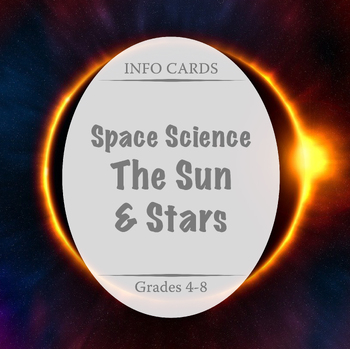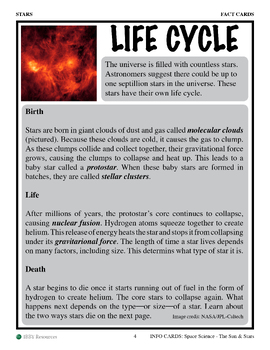Info Cards: Space Science - The Sun & Stars
- PDF
Description
This is our SPACE SCIENCE – THE SUN & STARS section of our INFO CARDS series. In this set, learn about the stars and other stellar bodies in the universe, including the sun in our solar system. These Info Cards provide in-depth information on stars and other stellar bodies in our universe, like molecular clouds, stars, planetary nebulae, supernovas, quasars, and our sun. Also included are Fact Cards on the life cycle of a star, star death, star types, the sun, solar flares, and solar eclipse. Bonus material in the form of a gallery, diagrams and timeline is also included.
Included in this set are:
- Teacher Guide
- 34 Sun and Stars Info Cards & Fact Cards
- Stars Gallery
- Layers of the Sun Diagram
- Types of Solar Eclipse Diagram
- Star Life Cycle Timeline
Use these Info Cards to help students get to know the stars in our universe, and the sun in our solar system.
To see the other titles in our Info Cards Series, check out our Info Cards Series section of our store.





